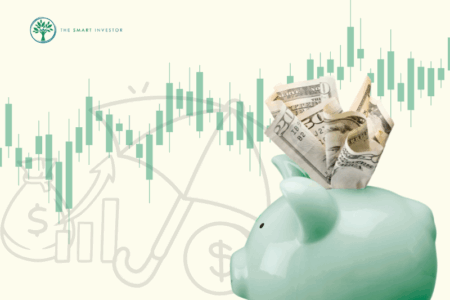In the investing world, there are truths, half-truths and mistruths.
Maybe it’s the way investors are portrayed in the financial media or Hollywood movies.
The ideal investor, according to them, is the one who makes it big through a spectacular bet on a winning stock.
Of course, this model investor is also clever enough to exit just before the stock falls. In fact, you are deemed to be a lousy investor if you hold on to a stock that declines.
If only investing was so easy.
As Warren Buffett once said:
“Beware the investment activity that produces applause; the great moves are usually greeted by yawns.”
The truth is, no one can time their entry and exit consistently with such precision.
Knowing what you don’t know
Sometimes, investors get too caught up wondering if it is the right time to invest.
For instance, today, some are wondering whether it’s too late to jump into the US stock market, given that it is hitting all-time highs. In their minds, if you are a good investor, you should be able to tell when it is a good time to invest.
Or so it seems.
Nothing could be further from the truth.
Even Buffett doesn’t know.
Back in October 2008, the Oracle of Omaha did something unusual.
He wrote an op-ed titled, “Buy America, I am” — his clearest signal yet that he is personally investing his own money into the stock market.
At the time, the NASDAQ (INDEXNASDAQ: .IXIC) had fallen by 40% from its all-time high.
It seemed like a good time to invest.
And yet, the tech-heavy index would fall another massive 26% before bottoming out six months later. In other words, as far as market timing goes, Buffett missed by a mile.
Here’s the truth: he knew going in that the market could fall further.
Timing his entry was far from his mind. He said, back in October 2008:
“Let me be clear on one point: I can’t predict the short-term movements of the stock market.
I haven’t the faintest idea as to whether stocks will be higher or lower a month or a year from now.”
So, if Buffett can’t do it, regular investors don’t have to beat themselves up expecting to be able to time the market.
Short-term pain in exchange for long-term gains
“When stocks are attractive, you buy them.
Sure, they can go lower—I’ve bought stocks at $12 that went to $2, but then they went to $30.”
— Peter Lynch
It would have been easy to criticise Buffett for the first six months. After all, he seemingly fluffed the timing of his entry, only to see his stocks fall as a result.
Here’s the thing: the critics on the sidelines avoided investing in October 2008 out of fear.
They cannot bear the thought of sitting on losing positions for months. Hence, it is unlikely that these sideliners will suddenly find the courage to buy when stocks are lower in six months.
Therein lies the wrinkle.
As Buffett once said:
“If you aren’t willing to own a stock for 10 years, don’t even think about owning it for 10 minutes.”
That’s why it is essential to take a long term view.
Interestingly, the NASDAQ has risen by well over 10 times, as of last Friday, since Buffett penned the October 2008 op-ed.
According to the ideal investor scoreboard, his call was “bad” for six months. But it was resoundingly “good” over the long term.
That’s the reward for the short-term pain.
Get Smart: Worrying over all-time highs
Today, the US stock market is near its all-time highs and the familiar worries are appearing again.
What if you buy today and the market falls?
What if you don’t buy today and the market continues to move up?
The truth is, there is no answer to these questions.
But there’s one thing for sure.
Worrying over where the market will go over the next six months or the next year will not get you any closer to the answer.
So, if you are worried about a potential market correction or market crash, why not channel that energy and prepare for it instead?
Start putting together a list of stocks you would buy if the market should fall.
While you’re at it, start saving up some cash too.
When you’re done, you can either choose to invest a little today and wait for better valuations. Or you could wait for a market correction before you put your money to work.
But be warned.
No one knows how long bull markets can last.
Stock markets generally favour the patient investor who is willing to hold on to their stocks over the long term.
Ready to discover the next $100 billion stock? Our newest FREE report dives deep into five popular SGX companies that many say are the next big thing. Read our team’s findings to guide your investment strategy. Click the link here to download now.
Follow us on Facebook and Telegram for the latest investing news and analyses!
Disclosure: Chin Hui Leong does not own any of the stocks mentioned.





